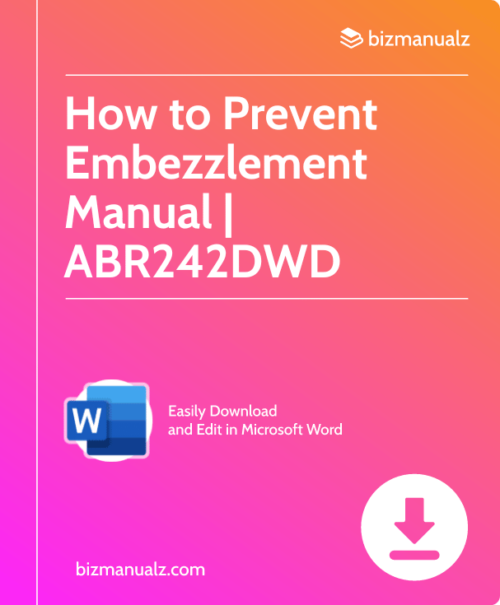How Do You Improve Poor Employee Performance?

As a manager or owner, simply telling your employees “we have to be more efficient” won’t motivate better employee performance. Saying, like wishing, doesn’t make it so. You have to be a mentor and coach to get the most out of your employees — all of them. So how do you improve poor employee performance?
You say you “don’t have time for that” Well, do you have time for inadequate performance? Do you have time to replace and train a replacement? Time to acclimate them to the “company way”? Time to recoup the investment you’ve already made or the experience? The wisdom?
How do your employees stack up to expectations? Are they performing at a satisfactory level? If not, could that be due to:
- Poor training
- Inadequate equipment
- Time pressure
- Lack of priorities and/or organization
- Poor communication
- Lack of motivation
Will Better Coaching Increase Poor Employee Performance?
Home in on the reason(s) for decreased employee performance to determine if better coaching will address them.
What, When, and Why — Does the employee know what to do, when to do it, and why? If not, you need to tell (maybe even show) them.
What Is and What Should Be — What is the standard of performance and how does the employee measure up to it? Does the employee know what the standard is? You have to let them know clearly what’s reasonably expected of them.
Communicate — Does the employee know his/her performance isn’t meeting the standard? You need to let them know.
Train — Does the employee have the skills needed to do the tasks required of them? If not, you need to invest time in training to get higher performance in return.
Realistic Expectations — That standard of performance: is it reasonable? What’s it based on? Is your standard current? Stretch goals are fine…as long as they’re fact-based.
The Butterfly Effect — What impact does substandard performance have on the rest of the organization? The employee may need to be reminded of his/her place in the firm, their relationship — direct and indirect — to everyone else, and how inadequate performance affects other people and processes. The organization is, after all, only as strong as its weakest links.
Ample Resources — Does the employee have enough (time, money, materials, etc.) to get the job done? You have to see that they do.
Performance Hurdles — Is something beyond the employee’s control affecting his/her performance? Is there something you, the employer or manager, can do to help?
Positive Feedback — Is the employee getting the occasional, well-placed “attaboy”/”attagirl” for a job that exceeded expectations? Or, are they being “rewarded” by having more responsibilities heaped upon them? “You did this so well, we’re going to give you more” can be as damaging as “You stink!”
Motivation — Is the employee’s heart in the job? If not, more training, better equipment, and more resources (like time) aren’t going to solve the problem of poor performance.
Steps to Improve Poor Employee Performance
Now, let’s say you’ve analyzed the situation and have come to the conclusion that coaching will help improve employee performance. Here’s how you might go about it:
1. Hold the coaching session private
Nobody but the two of you need be involved. Be warm and courteous. Remain calm and keep a positive attitude.
2. Clearly state upfront the reason for the session
Don’t be blunt, though. Say “I’d like to discuss (XYZ)”, rather than “I need to talk to you about your recent performance problems.” If you want to improve employee performance, you should engage them instead of talking at them.
3. Show your concern for the performance issue
Example: “It looks like we’re not following up with customers as quickly or as thoroughly as we should. We used to get back to 80% of our customers within 10 days of their purchase. Now it’s more like 10%.” Focus on the performance problem, not the person.
4. Describe the ways in which the performance issue affects others (including you)
Example: “When we don’t follow up with customers in a timely manner, they probably feel like we don’t care about anything but their money.” Emphasize “we” and “the team”. Putting the focus entirely on them only deepens the sense of isolation they already feel. Show the affects on organizational performance.
5. Acknowledge the employee’s side of the issue and listen
Regardless of whether the employee apologizes, rationalizes, promises to do better, etc., hear them out. They may have a valid explanation (like that they’re overworked — you might do more with less but you can’t do more with nothing). Remember: there are always at least two sides to every story.
6. Get the employee’s input on how to improve their performance
 Ask, “What can be done to improve our follow-through with customers?” There may be some beautiful gems hidden among their thought nuggets — help them find those gems. After all, they’re on the front line every day, so they’ll have insights you won’t.
Ask, “What can be done to improve our follow-through with customers?” There may be some beautiful gems hidden among their thought nuggets — help them find those gems. After all, they’re on the front line every day, so they’ll have insights you won’t.
7. Discuss possible solutions
Work with the employee to develop a number of potential solutions to the performance problem. Make use of the employee’s ideas and offer guidance, think outside the box, but don’t take over the project. You’re a coach, not a critic.
8. Agree on a solution and actions to take
Identify what you both think is the best solution. Agree on how to arrive at the solution and on reasonable deadlines. Be clear of your intent — that you want status updates so you can help them, not because you get any joy out of “riding” them. Be sure to put the action plan in writing and make sure you both have a copy.
9. Check on employee’s progress and continue to get their feedback 
In order to improve employee performance, give them additional guidance and reinforcement. Don’t hover around them constantly. Just make sure that they’re not stuck on something. If they have ideas on how to improve the process or the result, listen and evaluate. If they have a good idea, let them run with it. That is how to gain success with leadership.
10. Give positive feedback for positive results
Every time the employee meets a deadline or hands in a “deliverable”, give them a sincere “Good job!” Don’t say, “That’s more like it”, or You should’ve been doing this all along?
Improving Poor Employee Performance
Remember — even star employees who are strongly self-motivated (and there are probably more of them out there than you think) can use a sincere pat on the back…or a handshake…or a shout-out. So, you can imagine how an employee who’s been struggling will benefit from quality feedback.
You’ve been there. You know how good it feels when someone takes you under their wings. Give back what you got-it can only help improve employee performance.















Leave a Reply